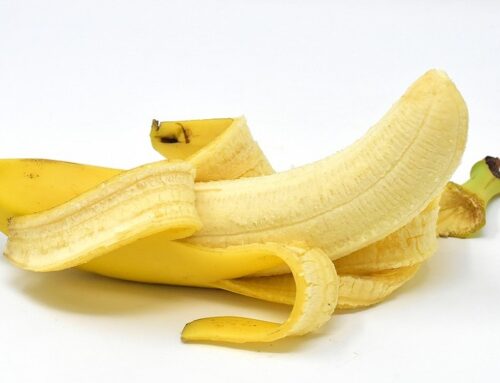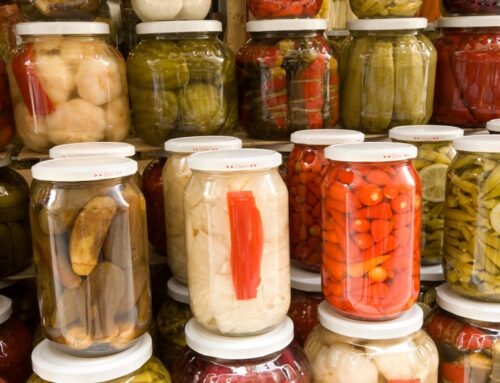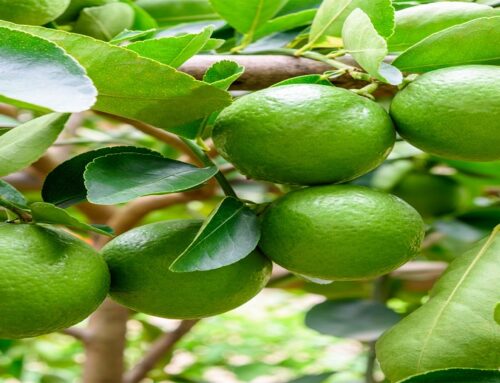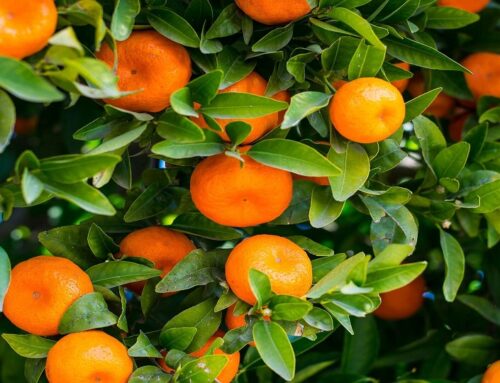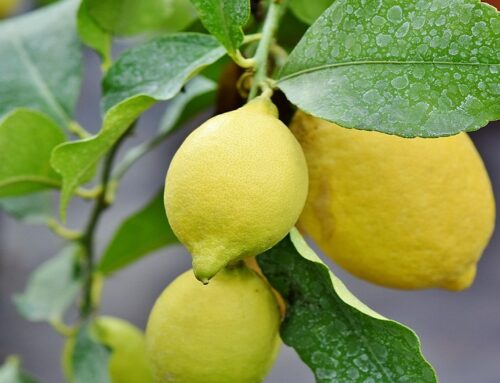Grapefruit is a hybrid citrus fruit, which is sour to semi-sweet to bitter in taste. There are different types of grapefruits grown all around the world. Two main varieties are: White-Fleshed Grapefruit and Red/Pink-Fleshed Grapefruits. Like all other citrus fruits, it belongs to the family Rutaceae and is a native of South-East Asian region.
Origin and Distribution: Grapefruit is believed to be originated as a natural cross between Citrus sinensis (sweet orange) and C. maxima (pomelo) in the Asian region. Currently, China is the top producer of both grapefruits and pomelos. The United States of America and Mexico are second largest producers.
Plant Description: Grapefruit tree is an evergreen plant that grows to a height of 5–6 meters on full growth; sometimes up to 10-15m. Leaves are glossy, dark green, long (up to 15 cm) and thin; petioles are broadly winged. Flowers are borne in axillary buds, either solitary or in clusters, and are white-coloured and four-petaled. Fruit is large; yellow-coloured when ripe and spherical-shaped with a diameter ranging from 10–25 cm. Fruit flesh is segmented and acidic, either with white-coloured or red/pink coloured flesh. Specific taste and flavour of the fruits is due to the presence of grapefruit mercaptan, a sulphur-containing terpene and the prominent glucoside present in the fruits is naringin. Seeds are white-coloured, and polyembryonic. The root system is fibrous and branched with a central tap root.
Food Uses: Fresh fruit juice is a rich source of Vitamin C. Juice is used to make desserts, sweets, and jam. Grapefruit and grapefruit juice have been found to interact with numerous drugs. Grapefruit can block the absorption of drugs in the intestine. One whole grapefruit or a glass of 200 ml of grapefruit juice may cause drug overdose toxicity. Hence overconsumption of grapefruits is not advised.
Varieties: Popular varieties of grapefruits are, Thompson, Ruby Red, Star Ruby, and Parnambico. A detailed account of these varieties is given below:
- Thompson’ is a pink variety (sometimes seedless or up to 5 seeds per fruit)
- Ruby Red and Star Ruby are red varieties and are very popular in the USA
- Parnambico, Triumph and Saharanpur are important varieties grown in India
Growing Grapefruit: A detailed account of growing practices for grapefruit plants is as given below:
Climate: These trees are essentially a plant of subtropical climate. Wet tropical climate and high altitudes are not suitable for the growth of these plants. However, they thrive well between 15.5°C and 29 °C. They are sun-loving plants and require considerable amounts (10-12 hours daily) of sunshine. They need plenty of water also for their growth; however high humidity should be avoided as it may invite plant diseases. For fruit development, there should be a temperature variation between summer and winter and, between day and night. They are sensitive to frost and hence frost-protection is mandatory.
Soil: Grapefruits can be successfully grown in well-drained, fertile, light or medium loam soils. They thrive well in well-drained alluvial, medium black and loamy soils also. Soil pH should be between 5 and 8 (moderately acidic to slightly alkaline soils).
Propagation: Seed propagation may be done for a small crop. For a commercial crop, grafting and budding may be used. In grafting, a rootstock is grown from seed and then bud from a scion variety is grafted into the one-year old seedling rootstocks. While choosing a rootstock, make sure that it is compatible with the variety/scion inserted into them. Otherwise the graft will not survive for a long period. Grafted trees mature uniformly and bear fruits earlier than seedling trees. Grafted trees begin to bear after 3-4 years of growth while a seedling tree begins to fruit after 5-6 years only.
Field Preparation: Field is tilled, and organic matter/humus is added to the top soil; alternatively green manuring may be done to increase soil fertility. Grapefruit trees are susceptible to heavy winds and hence wind protection should be provided in the fields. Pits of size 50x50x50cm are prepared well in advance and left for weathering.
Planting: One year old grafted plants are planted in well-manured pits at the onset of rains. Plant to plant distance may be kept at 4-5 meters while distance between two rows may be kept at 9-10 meters. A light watering is done soon after planting.
Irrigation: Irrigation @10-15 days interval during winter is recommended. Weekly irrigation is recommended during summers. Water requirement of young (1-4 years old) plant is about 5 to 15 litres/day. Water requirement of a mature plant (9 years and more) may be 60 to 170 litres/day. Irrigation should be planned according to the plant requirement and prevailing climatic conditions.
Aftercare: Pruning is not required for mature plants but slight pruning may be done for young plants to keep them in shape. Mulching may be practiced to suppress weed growth and to conserve soil moisture. Growth regulators may be sprayed to avoid pre-harvest fruit drop.
Disease Management: Major diseases of grapefruit plants are gummosis, citrus greening disease, and greasy spot. An illustration of these diseases is given below.
- Gummosis is caused by the fungus Phytophthora spp.; it affects tree bark which develops cracks and dried cankers; bark of the affected trees can be pasted with Bordeaux mixture in order to control this disease.
- Citrus greening disease is caused by the bacterium Liberobacter asiaticum; major symptoms are streaks on the leaves, and deformed fruits; this disease can be controlled by the use of disease-free planting materials.
- Greasy spot is a fungal disease caused by the Mycosphaerella citri; major symptoms are premature defoliation and wilting of the plants; Bordeaux mixture may be used as a control measure.
Insect-Pest Management: Major insect-pests that are found affecting the grapefruit plants are bark borers, citrus leaf miners, citrus white flies, and citrus fruit flies. An illustration of these insect-pests is given below:
- Bark borer (Inderbela tetraonis): These caterpillars make holes in the branches; they can be effectively controlled by injecting kerosene in the holes and plugging the holes thereafter.
- Citrus Psylla (Diaphorina citri): These insects can be controlled by the use of its natural enemies, ladybird beetles (ladybugs).
- Citrus leaf miners (Phyllocnisitis citrella): Larvae feeds on tender plants; these insects can be controlled by destroying the affected plant parts and also by the application of organic, pyrethrum based insecticides.
- Citrus whiteflies, citrus butterflies, and citrus aphids: All these insects attack on young leaves and tender shoots by feeding on them; they can be effectively controlled by the application of organic, pyrethrum based insecticides.
- Citrus fruit flies: These insects attack young and ripening fruits and can be controlled by the destruction of affected fruits as well as by the use of fly traps.
- Other major insects are scale insects, thrips and mealy bugs.
All these insect-pests can be effectively controlled by IPM, integrated pest management practices which make use of the application of organic, pyrethrum based insecticides, cultural control measures such as crop rotation, and use of trap crops, and biological control measures such as using ladybug beetles.
Harvesting: Grapefruits are non-climacteric fruits and hence only mature, ripe fruits should be harvested. Ripeness of grapefruits can be determined by the changes in fruit skin colour. Ripe grapefruits have greenish to yellowish green skin colour. During storage, ethylene gas is used to turn green skin to orange/yellow colour; this process is called degreening.
Storage: Grapefruits can be stored at refrigeration temperature in controlled-atmosphere chambers for up to 3 months after harvest. In home storage, they can be stored for one month if they are stored loosely in a perforated plastic bag at refrigeration temperature.
We have a book on ‘Citrus Fruits‘….
Check out our publishing services here…
We publish top quality videos on various ‘Food & Agriculture’ topics. You may subscribe our video channel here…


